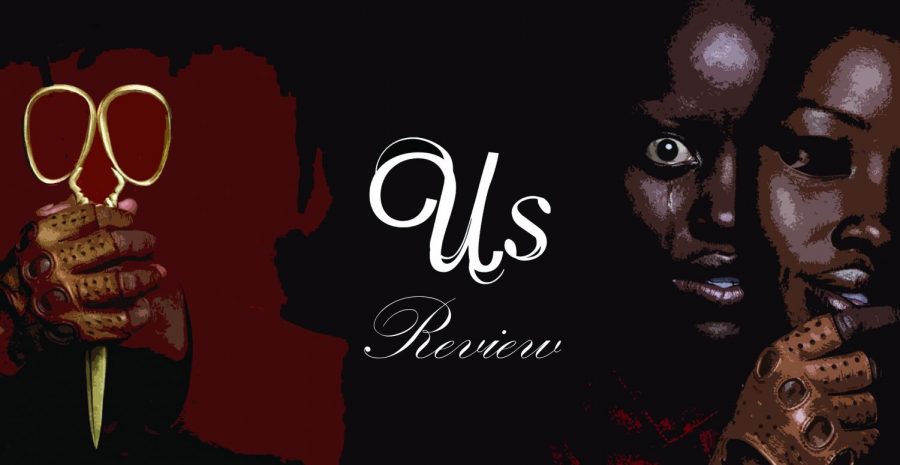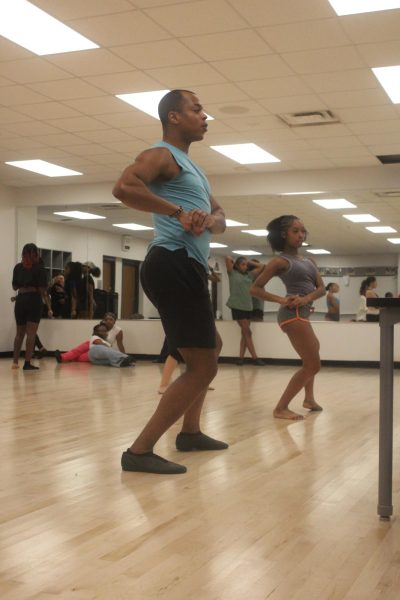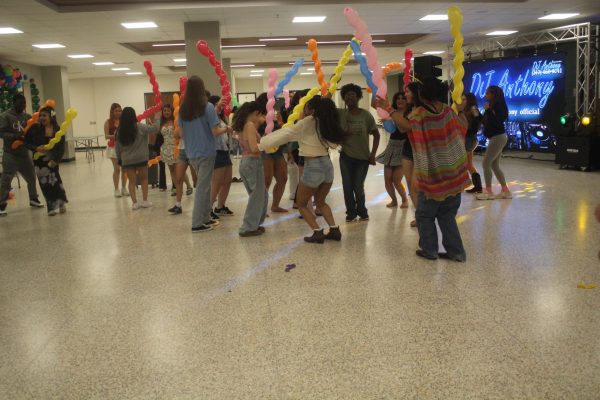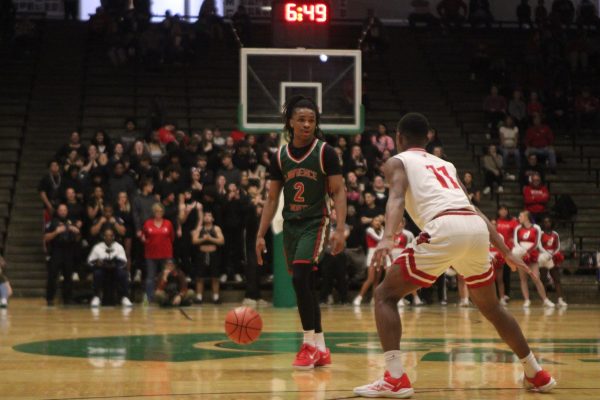Us Movie Review
Universal’s latest horror blockbuster has solid potential, clunky execution and multiple layers to Peele.
Jordan Peele’s 2017 horror hit “Get Out” was a surprising revelation.Seemingly overnight, Peele went from “MadTV” funnyman to an Oscar-winning writer and director.
With such a great debut, it’s not an exaggeration to say that eyes were instantly on Peele’s newest film “Us,” and audiences speculated if his sophomore effort would meet the lofty expectations placed upon it. To some extent “Us” meets those expectations, serving as a tense, socially-charged horror romp with a smattering of humor and twisting plotlines. But in comparison to its predecessor, while certainly being the more ambitious of the two, it’s a shame to say that “Us” lands itself as the lesser of Peele’s work.
The film opens in Santa Cruz, 1986, where a young girl wanders off from her parents to a nearby hall of mirrors, only to find herself facing not only her reflection, but also facing the unsightly and traumatizing vision of her own doppelganger. Cut to present day, and we’re still following the same girl, Adelaide (Lupita Nyong’o), now grown up in a comfortable middle class living with her affable husband Gabe (Winston Duke), and her two spunky children, Zora (Shahadi Wright Joseph) and Jason (Evan Alax). When Gabe proposes the family take a beachside vacation in Santa Cruz, Adelaide, uncomfortable with returning to the site of her past traumas, balks at the prospect but reluctantly goes along. Soon enough, Adelaide’s fears are proven right as ominous occurrences begin to happen around her, culminating in a home invasion heralded by a red-jumpsuit-wearing, golden-shear-wielding family of lookalikes silently amassed and ready to attack.
One of the most interesting aspects of “Us” is that the main players get to fulfill every actor’s dream of playing both the role of the hero and the villain. It’s no overstatement when I say that every member of the leading cast aces their role as both normal citizens and the terrifying doppelgangers known as the “tethered.” Lupita Nyong’o’s performance is the obvious standout, playing an Ellen Ripley-styled, strong-willed mother that you can’t help but root for, as well as her doppleganger, Red, a croaky, stern monster of a person whose performance is simultaneously steeped with a certain aura of sadness and terror.
Aside from the leading lady, there was a surprising amount of other great performances. Shahadi Wright Joseph and Evan Alax give fairly convincing and menacing roles, managing to break the child-actor curse of bad acting. Tim Heidecker of “Tim and Eric’s Awesome Show,” is surprisingly featured and clearly has the most fun of all the actors on set. Elisabeth Moss almost steals the show with a relatively small but surprisingly engrossing performance that may go down as some of her best work yet.
Peele truly makes you feel like the family you’re watching on screen is real, and the entirety of “Us” represents some of the best examples of good casting you can find in recent memory.
Similarly, the film’s scoring is also fantastic. Opening with a choir-esque chant that’s as haunting as it is mesmerizing, and following up the rest of the film with equally captivating and anxiety-inducing background scores of intense strings and drum beats that build tension and intensity throughout the film. And yes, I’m happy to say that the spooky, pizzicato version of Luniz’s “I Got 5 On It” is prominently featured in the film and put to great use with masterful execution.
The same could be said of the general directing and cinematography. Peele obviously took inspiration by some of the horror greats, such as “The Shining” and “The Night of the Living Dead,” and it’s clear that every prop, costume and character action on screen was chosen and displayed with a level of meticulous purpose and reason. Like “Get Out,” once the whole plot of “Us” is revealed, second time viewers will find themselves picking up on small motifs and details, that, on first viewing, have no real significance or goes by completely unnoticed by the audience. One of the best parts of “Us” isn’t during the film, but what comes afterwards, hearing about the small details that you overlooked the first time, and going back in and seeing them for yourself. It’s a movie that deserves a second look purely on a visual level, as it’s near impossible to catch everything your first time around, and well worth the feeling of putting two and two together on your second.
However, despite my praise of the movie’s near perfect performances and direction, I still found myself leaving “Us” with a slight feeling of disappointment. A feeling that, safe to say, was the product of the film’s writing and plot.
Now, I would like to preface this section by saying that I do not at all believe “Us” is a badly written film, far from it. In fact, the dialogue coming off as natural, believable and downright funny as it is, while still giving enough exposition and momentum to move the plot forward is nothing to overlook. Even if the humor did break the tension a little too often for my taste, none of the characters act like a the atypical dumb horror-movie protagonist, acting and behaving believably. However, what it gains in well-written characters and dialogue, the film loses in its overall structure. Namely, its ending, a topic which I won’t dare spoil here. After watching “Us” for the first time, I found myself thinking less about the contents of its ending, but instead I found myself fondly thinking about “Get Out” and its plot and ending instead. What “Get Out” had that “Us” doesn’t, is a solid sense of narrative cohesion. “Get Out” was a wonderfully told thriller that used it’s status of a horror movie to flip tropes on their head and spread a politically charged message of race and discrimination.
“Us” similarly attempts to tackle a social issue with its plot, and while just as well paced, scary and dense as its plot is, when compared to “Get Out,” its social commentary is far less prominent. A movie not beating its audience over the head with its message is far from the worst problem to have, but when Peele coins his films under the self-made genre of “social horror,” audiences leaving the theater unsure of what the movie was trying to say isn’t the best impression.
Once the audience does piece together the film’s message, it comes off far less inspired, and far more broad than the one in “Get Out.” Having audiences overthink the film’s social commentary in a film with a third-act plot revelation that breaks down the moment the audience thinks too hard about the logistics of it, and leads to the disastrous results of audiences focusing on the myriad of plotholes. The end result is a movie that starts off strong but ends with the feeling that Peele acting as an unchecked director, producer and writer, may have been a task that’s a little too much for one person to handle.
Then again, some people don’t care much at all about the social commentary in their blockbuster horror film. Some people may not have realized that “Us” was even supposed to have a message. But even if you did, it’s still easy to say that “Us” is definitely worth checking out. Despite my gripes, the film’s iffy ending and muddled messages aren’t enough to bring down the film’s stellar performances, cinematography and score. The film provides plenty of memorable moments and scares to be worth the price of admission, and the performance of Lupita Nyong’o alone may be worth the trip. If you like solid horror, and more importantly, if you liked “Get Out,” you’ll be sure to like this one too. Just be sure to keep your expectations firmly “tethered” to reality.












